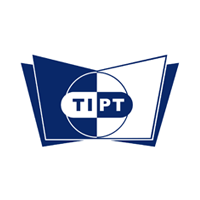
HPLC or high-performance liquid chromatography is a commonly used technique in laboratory settings for a variety of purposes, favored for its efficiency, speed, and incredibly high accuracy.
HPLC can sound complicated to those hearing about it for the first time, but students in HPLC training can gain a solid understanding of the method and master the techniques involved fairly quickly. In approximately eight weeks, students learn everything they need to know about HPLC instruments, method development, and validation, leaving with all the skills and knowledge necessary to begin work in a laboratory, carrying out HPLC analysis.
For anyone seeking to gain an advantage in their laboratory career, here are five things to know before starting your HPLC training.
1. HPLC Separates Components in a Compound Based on Their Polarity
HPLC is a chromatographic technique that separates a mixture of compounds into its constituent components in order to identify, quantify, and purify them. It does this by separating those components based on their polarity.
In a polar compound, molecules are positively charged on one end and negatively charged on the other. In a nonpolar compound, they are not. While polar compounds mix well with other polar compounds, nonpolar compounds do not.

2. HPLC Columns Use a Stationary and Mobile Phase to Separate Compounds
An HPLC column, which students will become familiar with in their HPLC training, contains what’s known as a stationary phase, often composed of silica particles, which is nonpolar. The mobile phase, usually a mixture of water and some sort of organic solvent, is pumped through the column with the sample to be analyzed. This is often done along a concentration gradient, meaning that the mobile phase flushing out the sample becomes increasingly nonpolar over time as the proportion of water decreases and the solvent increases.
3. Chromatograms Can Show What Components Make Up a Compound
Compounds in the sample either stick to the nonpolar stationary phase or are flushed out with the mobile phase when their polarity matches. A detector measures the compounds as they’re flushed out, and after the HPLC run is complete, a chromatogram is produced, which can then be used to identify each component in a sample.
4. Students in HPLC Training Should Know the Advantages of the Process
Students in pharmaceutical technology college know that HPLC is one of the premier analytical techniques in laboratories today for good reason. It can be used to analyze a wide array of compounds and substances, from small organic molecules to polymers. Combined with mass spectrometry, it can offer both excellent separation capability and a high degree of specificity.
5. HPLC Has a Range of Applications in Science and Pharmaceuticals
In biology and medicine, HPLC can be used to analyze biological and environmental samples for a variety of known compounds like metabolites, drugs, or pesticides. In chemistry, it’s frequently used to monitor chemical reactions and determine the purity of different compounds. Because it can be used to analyze food, drugs, or biological samples, it’s a very common method in laboratory science, particularly in the pharmaceutical industry, in which experts with HPLC training are in high demand.

Are you interested in developing valuable new skills for your pharmaceutical career?
Contact TIPT for more information about earning your HPLC certificate.

I need a training on hplc
You could start by looking at experiments on scientific article sites to look at their methods. Some are more specific about how the HPLC equipment was used. YouTube also likely has some training videos.
It’s interesting that an HPLC run can help identify components in a sample. My brother works in a pharmaceutical lab and needs to get a new HPLC that can analyze some biological environmental samples he’s got. He should get a portable one to carry around to analyze for more drugs or pesticides.